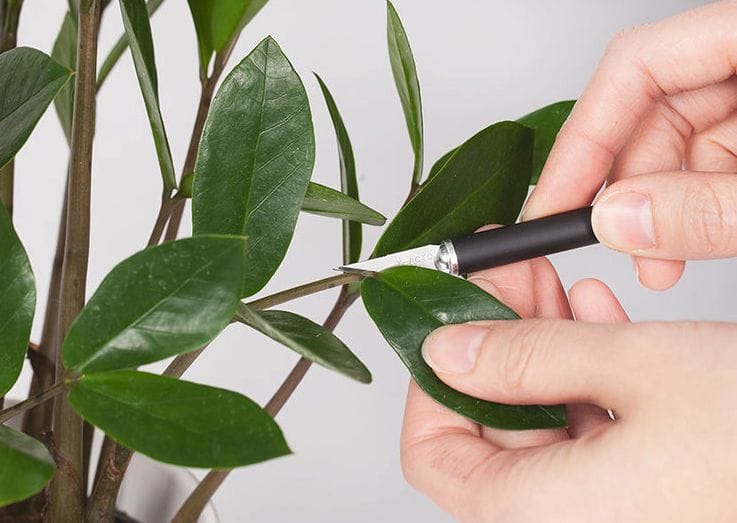Why Are My Bell Peppers so Small
Just like a puzzle missing a piece, your garden may be lacking something keeping your bell peppers from reaching their full potential. You’re watering them, giving them sunlight, but still, they’re not growing as you’d expect.
Could it be the soil? Or perhaps it’s the spacing? These are all good questions, but the answer might not be your thoughts. Let’s journey together into the world of bell peppers and uncover the secrets to their size.
Understanding Bell Pepper Growth

Let’s dive into understanding bell pepper growth, a key factor in determining the size of your peppers. This plant requires 6-8 hours of sunlight daily to effectively photosynthesize, which is vital for plant growth. Proper hydration is also crucial, so don’t overwater or underwater your bell pepper plant. It’s a delicate balance you’ll master with time.
Feeding your plant with a balanced nitrogen, phosphorus, and potassium diet is essential in producing large, healthy peppers. Don’t overlook plant spacing; it’s needed to avoid resource competition and promote growth.
Factors Affecting Bell Pepper Size
Delving into the factors that affect bell pepper size, it’s important to note that aspects such as insufficient sunlight, improper watering, nutrient deficiency, overcrowding, and extreme temperatures can hinder their growth.
Your bell peppers need 6-8 hours of sunlight each day for successful photosynthesis. Watering should be consistent, but avoid waterlogging the soil. Nutrition is vital; consider a soil test to ensure your plant is getting the right balance of nitrogen, phosphorus, and potassium.
Overcrowding is detrimental as bell peppers require ample space to thrive. Finally, these plants prefer a moderate temperature range for optimal growth. By understanding these factors, you’re on your way to growing larger bell peppers.
Common Causes of Small Bell Peppers
Understanding that small bell peppers can be a result of factors like insufficient sunlight and improper watering, it’s crucial to also recognize other common causes such as pests, diseases, and environmental stress. Pests and diseases can stunt your bell peppers’ growth by draining vital nutrients and causing physical damage. Environmental stress, such as extreme temperatures or crowded plants, can also hamper their development.
Lack of essential nutrients, a part of plant nutrition, can lead to small-sized peppers. Even if you’re giving adequate sunlight exposure, poor nutrition can restrict their growth. Each of these factors can independently, or in combination, result in smaller bell peppers. Monitoring for these issues and promptly addressing them can help improve the size and quality of your bell peppers.
Tips for Growing Larger Peppers
To grow larger peppers, you need to pay close attention to sunlight exposure, watering practices, use of fertilizer, plant spacing, and temperature control. Your bell peppers need 6-8 hours of daily sunlight to maximize photosynthesis.
Consistent watering is key to avoid stress that can stunt growth. Use a balanced fertilizer rich in nitrogen, phosphorus, and potassium; these essential nutrients can be found in quality potting soils.
Adequate spacing between plants prevents competition for resources, giving your peppers room to grow. Mind the temperature, as bell peppers prefer cooler temperatures; excessive heat can result in smaller peppers.
Troubleshooting Small Bell Pepper Issues

Facing small bell pepper issues in your garden can be frustrating, but with a little patience and careful observation, you can pinpoint and address the root causes effectively. Your bell peppers might be producing small fruits due to a few reasons. Here’s what you can look out for and how you can address these issues:
- Sunlight: Bell peppers need at least 6-8 hours of sunlight each day. Ensure your plants aren’t in a shaded area.
- Watering: Overwatering or underwatering can cause small fruits. Water your plants when the top inch of soil is dry.
- Nutrients: Nutrient deficiencies can stunt growth. Use a balanced fertilizer and ensure your soil has the right pH level.
Conclusion
In conclusion, if your bell peppers are smaller than desired, it’s likely due to suboptimal growing conditions. By ensuring enough sunlight, regular watering, balanced fertilization, proper spacing, and ideal temperatures, you’ll increase your chances of growing larger peppers.
Don’t be discouraged – with a bit of investigation and tweaking, you can transform your bell pepper growth. Remember, gardening is a learning process, and even the smallest changes can lead to big improvements!







